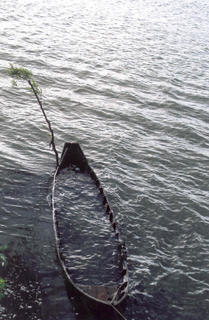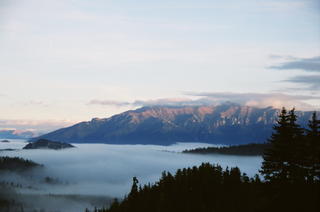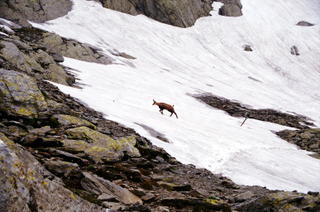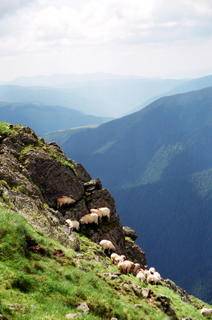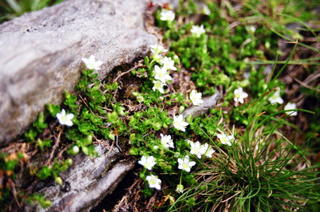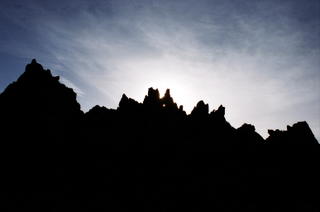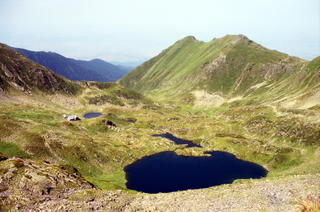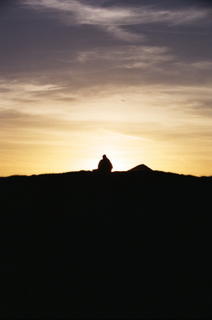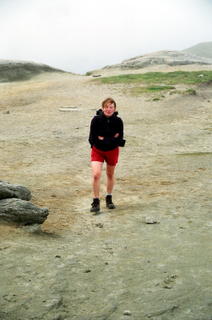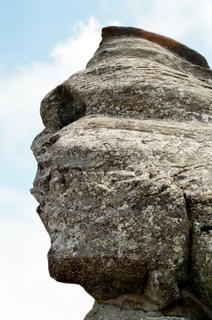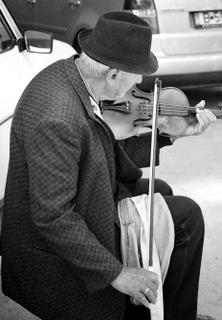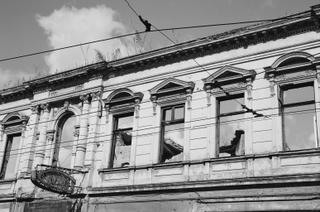Morocco: Chefchaouen pictures and diary







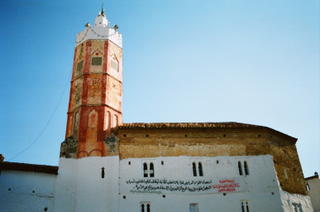

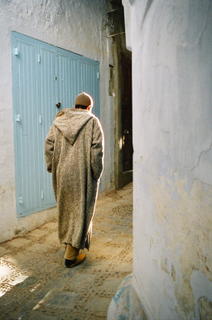

January 6, 2005
At four in the morning we started our trip from Gyergyoszentmiklos (in Romanian: Gheorgheni). Around half past eight we arrived at the train station in Brasov from were we rushed to the bus station which is in a different part of the city. Here we waited for a bit more than half and hour until our bus arrived from Bucharest. After “boarding” we started our long way to Spain from where we planned to cross to Morocco.
January 7, 2005
Early morning we had some problems at the Romanian-Hungarian border, while the rest of the day passed more or less eventless: watching American movies dubbed in Spanish, listening to “manele”. Somewhere in Austria during a stop we met a Polish truck driver. We were long planning to hitchhike through Spain, so here was our best opportunity to ask for some valuable advices. He suggested that we should go to La Jonquerra, which is very closed to the Spanish-French border, though a couple of kilometers from the highway. Here, he said, we will find many truck drivers heading south and definitely we will find somebody who would take us.
January 8, 2005
Early morning we arrive to the Spanish town of Figueres. We found transport to La Jonquerra, but we have a couple of hours to wait, so we go around the city and buy a Camping gas cartridge. Figueres proves to be an unexpectedly charming city with helpful and friendly people, small streets and a nice open-air market.
Around 12.00 we leave for La Jonquerra, where we arrive after half an hour. We are amazed by the number of the trucks: there are at least 3-4 huge parking lots in the town and more thousands of trucks. Looks like this is the main income for the town. We start going around and asking drivers for advices. Of course, first we look for Polish, Hungarian or Romanian drivers: maybe speaking the same language will help.
Eventually we find a Polish driver who takes us to the biggest parking lot and here we start looking for somebody who could take us South. We spend 3-4 frustrating hours with no result. We are getting more and more tired, but then Ania notices a Polish truck. It turns out the Artur, the driver, is going until Valencia and he would take us. The happiest moment of today!! Half an hour later we get into his truck and start our way to Valencia. Ania talking and Ervin just listening and sometimes sleeping. Artur is from Lublin and it turns out that he knows a lot about Spain, about the season of picking tangerines and oranges and so on. So we spend good time in his truck. The best is when he plays on his stereo good old Polish rock.
Around 20.00 we pass by the city of Barcelona and we stop at a gas station. Here Artur has to take his compulsory rest, so we decide to put our tent in some bushes near the gas station. We fall asleep exhausted, since we barely slept in the last 3 days. We wake up around 23.00, we are freezing and trying to rush the night to pass. Around 24.00 the coldness is almost unbearable and then Ania “jumps” into Ervin’s sleeping bag. This seems to help and we actually fall asleep again.
January 9, 2005
We cannot take the cold anymore, so we get up a bit after four, we pack the tent and get ready to go. First we go to a restaurant where we have hot morning coffee and it feels like heaven. Artur supposed to get up a bit after six, but we start our trip only after seven. Again beautiful landscape, interesting infos from our driver and early afternoon we reach the place where Artur and we depart. We are trying to hitchhike for a couple of hours, but without much success. People with caravans and going to Morocco pass us by and they tell us that they don’t have any place in the car…
Eventually a car stops and three Spanish youngsters with a very broken English try to explain that we have no big chances to get a ride from here. They offer to take us to a small city from where we can take train to Valencia and then a night bus to Algeciras. We are already exhausted, so we take on their offer. In the afternoon we arrive to Valencia, we get our tickets for Algeciras. Then we walk a bit around the city, which seems very nice. Later in the park we see two Muslim homeless men drying their clothes. Later they turn towards Mecca and start praying. It is amazing to see how they do the ritual cleaning before praying with imaginary water… we are just speechless.
Late afternoon we head to the bus station and get on our bus. In the last three days reaching Algeciras seemed almost like a “mirage”… but now we are on our way!
January 10, 2005
Early morning we arrive to Algeciras. We try to look for the cheapest ferry, but they are almost all at the same price, except the fast ferries. Around nine we get on board and we are almost burning with excitement. We spend most of the time on the deck and we are just waiting finally see the shores of Africa.
At half past 11 we reach the port and finally put a feet on African ground. We were a bit worried about the hustlers in the port, but a couple of “Non, merci” is good enough and we rush to the bus station. We hope that our bus, which supposed to be at half past eleven is still there… A kind policeman tries to trick us: he tells us that the bus station is far and we need to take a cab, but we find out that the station is just a 5 minute walk away. If you will be in the same situation, don’t let yourself be cheated!!
We arrive at the station and our bus is still there! It is a bit confusing how they handle our luggage, but eventually we get everything right and get on the bus. The first surprise is that the bus has air conditioning and is extremely comfortable. Back then we didn’t know that CTM has the most luxurious buses.
We forget all our tiredness as we drive through Tanger and later the countryside. Everything seems so strange and new at the same time. The bus ride takes 3-3,5 hours and finally we arrive to our first destination, Chefchaouen. We find our way to medina quite fast, and using our guide book we try to locate some hostels. Usually we don’t have orientation problem, but in the medina the map seems useless. Everybody wants to talk to us, take us to a good hostel or offer us a smoke (meaning: marijuana. It is good to know that the Rif mountain region is a small heaven for marijuana growers). The stalking gets quite irritating, the backpacks heavy and we just want to find our hostel. Eventually we bump into a Canadian guy (whose name we don’t remember) who takes us to Ibn Batuta hostel. The conditions are not the best (especially the bathroom), but we get a double room for 50 dirhams and we have access to the terrace (in Morocco and in other Muslim countries the roof is used as a terrace). We unpack, take a shower and head to discover the medina.
After a couple of minutes of walking around we are simply stunned and dazzled by the beauty of the medina. The city has an interesting history: it was founded by Jews and Muslims, whom had to escape from Spain. In the beginning of the 20th century when Spain conquered this part of Morocco, the Spanish soldiers were amazed to find that in the city most of the inhabitants still spoke an old form of Castellano. The mixture of the Muslim and Jew architecture and culture created a town with a unique atmosphere. Almost all the house are painted in a shade of blue, the small streets make up an interesting and in the beginning confusing labyrinth, which finally lead to bigger squares. We just fall in love at the first sight with this small town.
Our walk ended in the “Dalia Snack Bar”, which is not really snack, neither bar. The Lonely Planet guide writes that here you can find good hamburgers, but this is not true. Here you can find amazing home made Moroccan food. The place is not fancy and it has only 2-3 tables, but we follow the rule “Eat where the locals eat” (they know why they eat there!) or at least we try to eat in places which look a bit more local. Going to a fancy place only for tourists can be an unpleasant experience.
So, returning to “Dalia”: the owner only speak French, but he is extremely friendly (in the positive way). We want to eat tajine, but he tells us that making a real tajine takes at least three hours, so if we will come back tomorrow we can try his wife’s tajine. So we eat kefta, which is great and indulge ourselves with two cups of “café au lait”. Later we buy bread, cheese, dates and orange and after nine we go back to our hostel and we almost literally pass out of tiredness.
January 11, 2005
We wake up after 11 and eat our breakfast on the roof. Amazing bread, home made cheese, freshly picked orange and olives: these are the ingredients of our first Moroccan breakfast. Our laundry was just piling up in the last couple of days, so we are looking for some solution… the Canadian girls at the hostel tell us about a place where the Muslim women wash clothes. The girls also tell us that a couple of days ago, a guy (obviously tourist) was washing clothes and all the Muslim women were laughing at him. So Ervin decided to walk Ania to the “washing club”, but decided not to take part in the activities. Of course, all this for understandable reasons.
The local women in the beginning look quite suspiciously at Ania, but when she takes out Ervin’s trousers to wash, one of the younger girls who speak English asks her: “Your man’s?”. When Ania answers with yes, all the women start nod their heads and smile: “So all these stories of women emancipation in Europe are a lie”, they are thinking.
When we are returning to our hostel with the clean clothes, we are “kidnapped” by a carpet seller. He takes us to his shop and what is amazing is that we simply are not able to refuse. He kissing us almost all the time, showing carpets and blankets. Of course we don’t want to buy anything, but eventually we end up buying a blanket. The original price for the blanket was 1200 dirhams, but we manage to bargain it down to 420 dirhams. Though is still not sure that we made a good deal.
At least we have a good initiation on how to bargain in the Muslim world. Bargaining is a rule here ! But be careful: if you really don’t want to buy anything, don’t even enter the bargaining “game” because then you will end up buying something!
After getting back to our hostel, we walk around the medina and take pictures and later we do shopping outside the medina. Next day we are planning to go for a couple of days hiking in the Rif mountains.
Early evening we go back to “Dalia” and have a great tajine and cous-cous. It really worth to try it!!
January 12, 2005
We get up at 7 in the morning and we pack for our trip probably waking all our neighbors… Sorry! We struggle a bit with getting out of the town because there are no marked paths and we try to “navigate” by using the Lonely Planet guidebook. Eventually we find the right 4WD road and our ascent begins. We are not beginner climbers, but the full backpack, the burning sun and the non-stop 1200 meters ascent simply is more than exhausting. Yesterday we were thinking that this will be an easy hike, but clearly we underestimated the mountain. After noon we reach the top and from there it seems a lot easier. On the way we pass by small Moroccan villages with only two-three houses and people living in extremely harsh conditions. Of course, everybody offers us a “smoke”. In the late afternoon we reach another small village called Azilan, here we could find accommodation with excellent conditions, but the price is too high. We try to bargain, but for some strange reason bargaining doesn’t work now. We decide to go to the next small village, called Afeska.
At the first house in Afeska we ask for some bread. When the young girl understands us, she goes inside the house and brings out a half bread. It is obvious she took it from their own… but she simply doesn’t want to take any money. Later the mother arrives, but she also refuses to take money. We are simply amazed by the poverty this family lives in and even then they don’t hesitate in sharing their own bread without taking anything in return. Then we pull out stickers and pencils from our bag and we hand them to the kids.
We cannot find accommodation, so we are ready to put up our tent next to a small football ground. We make some tea and take a rest before putting up our tent. But we get company quite soon: Hameed joins us and he wants to rent a room in his house. Since the weather is getting chilly and we remember the frozen streams which we saw before, we decide to take on the offer. With a bit of bargaining we manage to go down from 100 to 50 dirhams, so we start our way to Hameed’s house. He walks fast and we are struggling to keep up with him, but at times he has to wait for us. When we arrive to the house he asks us to wait outside and he rushes in to clean the room. After some strange noises the door opens and we are invited in: the room has a low ceiling, two beds, a table and a lot of blankets. While Hameed disappears we draw the conclusions: it looks strange and it smells funny, but still better to be inside then outside. We prepare fresh mint tea and then Hameed joins us again and we start our long and difficult conversation: we speak a bit of French and Spanish while Hameed a bit of Spanish and Berber. Regardless the language problem our communication seems to be ok and we find out Hameed’s story: he is 23, father of two kids and his family is living in Chefchaouen while he lives here, takes care of the animals and does business. What kind of business? – we wonder but when he offers us a “smoke” we realize what business. His brother is living in Spain, somewhere in Ibiza and selling marijuana. In Hameed’s eyes the brother is living the high life and as soon as he will get a visa he will join him. After three “smokes” Hamees is quite wasted so he leaves us.
Outside is already dark and silent and we see the most amazing sky: we spend more than half an hour just “exploring” the starts and then we hit the bed.
January 13, 2005
Outside is freezing so it was good decision to stay inside. Hameed brings us coffee and after we pack we tell him bye and hit the road again. We are walking on small paths, river beds and all the time checking the map since in the Rif mountains there are no marked tracks. The Lonely Planet guidebook warns that we shouldn’t use the map for navigation purposes, but we have no other choice. We pass by small villages where we give away stickers and pencils (it’s a pity that we don’t have any pens…). The hiking is not hard, rather finding the good track is stressing.
Eventually around 17.00 we arrive to Akchour and we head to the first restaurant. We are not happy meeting a group of shiny and pinkish Spanish tourists who just came here with a minibus… We are quite tired we order a soup and we get into conversation with some locals. They tell us that in 15 mins a minivan is going back to Chefchaouen and we might go along. After 5 mins of “family council” we decide to go back.
We arrive at Chefchaouen early evening, wee check in at Ibn Batuta and after shower we go for a walk. We feel like at home!
January 14, 2005
We get up around half past seven and for more than one and a half hour we walk around observing things, taking photos, trying to have some conversations. It is fascinating how the town wakes up, how the shops open and soon the small streets of the medina will be just a river of people. At approximately 9 the “Dalia Snack Bar” opens and we start a day with a double “caffe au lait”. Probably the caffe au lait and the pastry products are among the few good things that French left. If you have possibility start your day with a “caffe au lait”! Obviously, the best is when done with espresso and hot milk. Try it!
After breakfast we go to see the “modern” part of the city and we also check our bus to Fez. We just hand out all day walking, doing some laundry and in the evening again we are at “Dalia” where we eat tajine, drink three caffe au lait and play dices. Before we leave we say bye to our guy and we go for a “good bye” walk.



